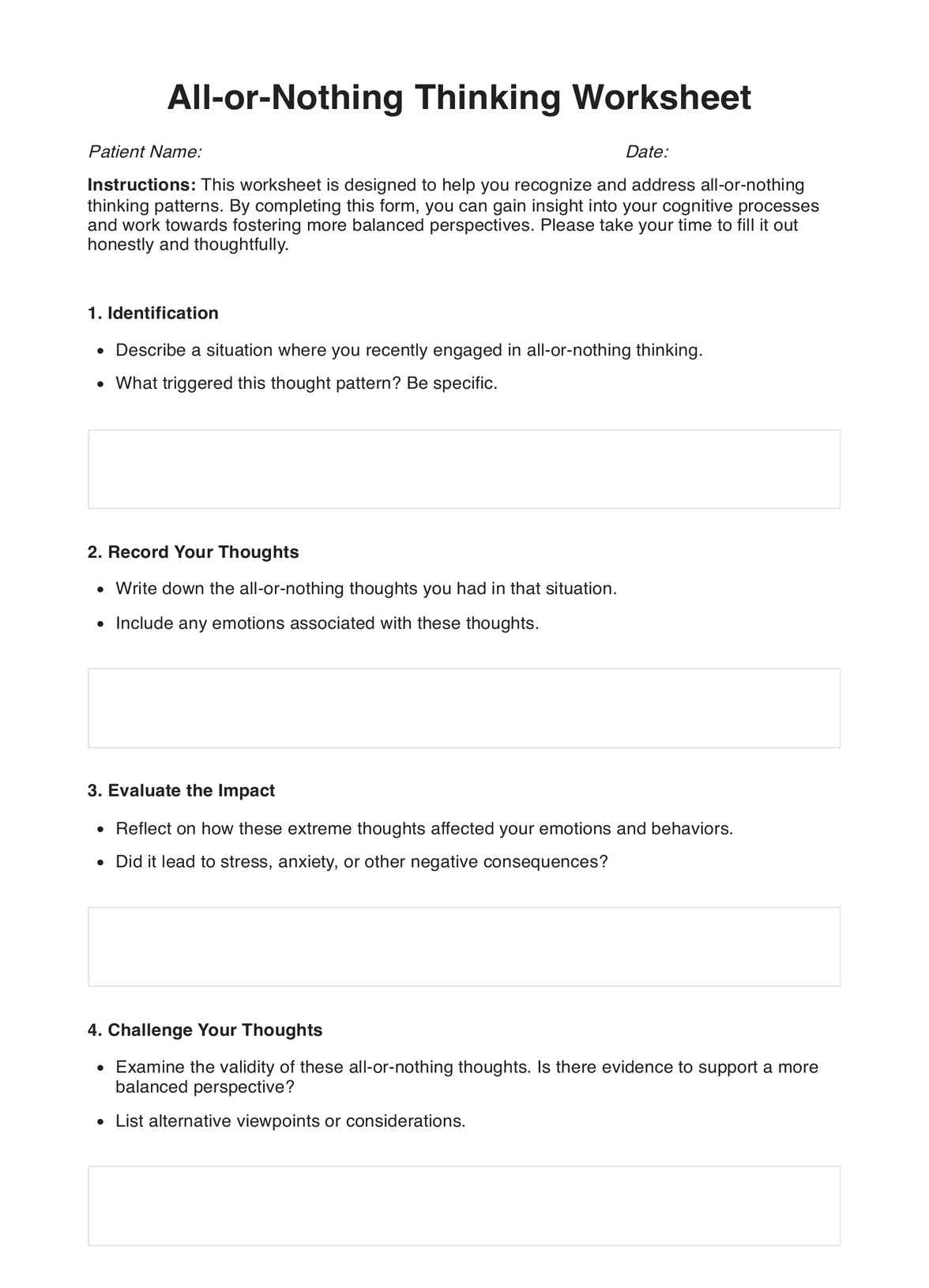What is an All-or-nothing Thinking Worksheet?
The is a cognitive-behavioral therapy (CBT) resource designed to help individuals identify and challenge their patterns of all-or-nothing thinking, also known as black-and-white thinking. Identifying cognitive distortion involves viewing situations, events, or oneself in extreme, binary terms, such as "all good" or "all bad," with no middle ground.
This worksheet aims to guide individuals through a structured process of recognizing when they engage in all-or-nothing thinking, understanding its impact on their emotions and behavior, and developing more balanced, nuanced perspectives. It typically consists of several sections, including:
- Identification: Users are encouraged to pinpoint situations where they engage in all-or-nothing thinking. This involves recognizing specific triggers or thought patterns that lead to this cognitive distortion.
- Evaluation: The worksheet helps users assess the emotional and behavioral consequences of their all-or-nothing thinking. It often asks them to reflect on how this cognitive distortion affects their relationships, decision-making, and overall well-being.
- Challenge: Individuals are guided to challenge their black-and-white thoughts by looking for evidence that supports a more moderate perspective. This might involve considering alternative viewpoints, questioning assumptions, and examining past experiences.
- Replacement: The worksheet encourages users to replace their all-or-nothing thoughts with more balanced, realistic ones. This step helps individuals develop healthier thought patterns and coping strategies.
- Practice: Finally, the worksheet often includes exercises or activities to help individuals practice applying these new thinking patterns in their daily lives.
This worksheet is a valuable self-help tool that can assist individuals in breaking free from the limitations of extreme thinking and fostering a more balanced and adaptive mindset. It is commonly used in therapy, self-improvement, and personal development contexts to promote mental well-being and emotional resilience.












